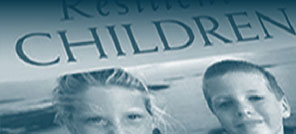I began writing a monthly article to be posted on my website 24 years ago. As any long-time readers can attest, there are several themes that I continue to address. I consider them to be “timeless,” as significant now as they were decades ago. While they may be influenced by current events, their basic principles remain steadfast. As one example, I have been writing about nurturing resilience in ourselves and others (children, students, patients, employees) for more than 35 years. During that time, noteworthy situations have emerged that impact significantly on our daily lives, including the growth of the internet, the occurrence of terrorist attacks such as 9/11, and the presence of the coronavirus with its many ramifications. Yet, the components of a “resilient mindset” and strategies for promoting a resilient lifestyle that my colleague Sam Goldstein and I described more than 20 years ago in our books Raising Resilient Children and The Power of Resilience (the latter examines resilience in our adult lives into our senior years) remain the same. If anything, while the specific guideposts and techniques we proposed to reinforce resilience have not changed, their application has assumed greater urgency. This is evident in the well-documented increase…



